Processism.
Processism studies ways of imagining processes that storytell steps to any design solution. Mostly through understanding the way things work, the way things can work, and alternative ways to make things work. It is a useful tool for solving problems. The exercise is used as a method for building problem solving aptitude.
The Exercise:
Step 1. Pick a problem set.
This could be an architectural work, art work, the process of making coffee, or raising a billion dollars.
Step 2. Dissecting into parts.
We begin by dissecting the known problem set into parts. For the purpose of simplicity I have limited these to 6 for the following architectural study.
Step 3. Gather data.
Your aim here is to collect as much data as you can about these sets through books, internets, or any other source of information. The authenticity of the data is not important.
Step 4. Understand the data.
Your aim here is to look at the complete data set as one. Now, from a third person perspective, thinking of “How would you solve the problem, or recreate the solution?” / “Would your solution be the same as the popular ones, or as the existing ones?” / “Or would you like to do things differently?”
Step 5. Choose the blanks.
Whatever your answer is, think about the blanks in the whole story. Your aim here is to choose the blanks that you think need to be done differently. You can choose literal blanks viz. parts that you or anyone else has no knowlegde about — the unknown. OR You can choose to redesign, redo, rethink viz. parts that have existing ways of doing things — the time tested. Title these blanks. Write these down on paper.
Step 6. Fill in the blanks.
Once you have decided what you don’t want. You will know what you want. Once you have decided. Only once you have decided, can you start filling the blanks.
Step 7. Start small.
Start by adding one line to every blank title. One. Only one, not two.
When you reach the end of this step viz. adding a line to the last title.
Go back to the start of the document.
Now, repeat.
I have set limits to the number of lines you can write at every step.
The reasons are:
- Exhaustion: When you have a limit, your mind will not exhaust itself on one title. The quality of the entire document (design idea) will remain equal throughout. You won’t have a terrible ending. Or a terrible beginning. Or a mediocre document or idea.
- Connect : The practice of breaking flow to jump to the next title will enable you to see the connect. It will gradually build itself. One line at a time. Effortlessly.
Step 8. Breaking the limits.
The human mind is an easy animal. It’s a sucker for comfort. When you restrict it to adding a single line to the idea, it may abide by it for a while. But when your brain is buzzing with activity past it’s tipping point, you can bet your life on the fact that the mind will forget about the restrictions, and choose that sweet taste of dumping line after line without a moment’s pause. This flow is what you are looking for.
Once you are exhausted at this point, you can edit the whole document. Shuffle the flow of the titles. Move around the text to make the story to be the way you think is better. You will have to repeat the process to actually get into the flow where all the magic happens. The real aptitude building happens after you have subjected yourself to this torture over many problem sets.
Casa Tolo is a house designed, and built by Alvaro Siza in Portugal. Here, Casa Tolo is studied as an exercise in processism.
 Casa Tolo Front Page.
Casa Tolo Front Page.
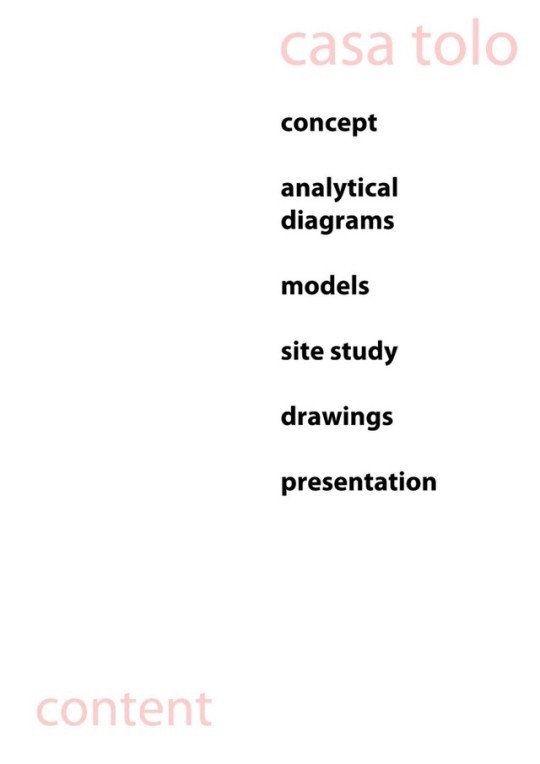 Casa Tolo Contents.
Casa Tolo Contents.
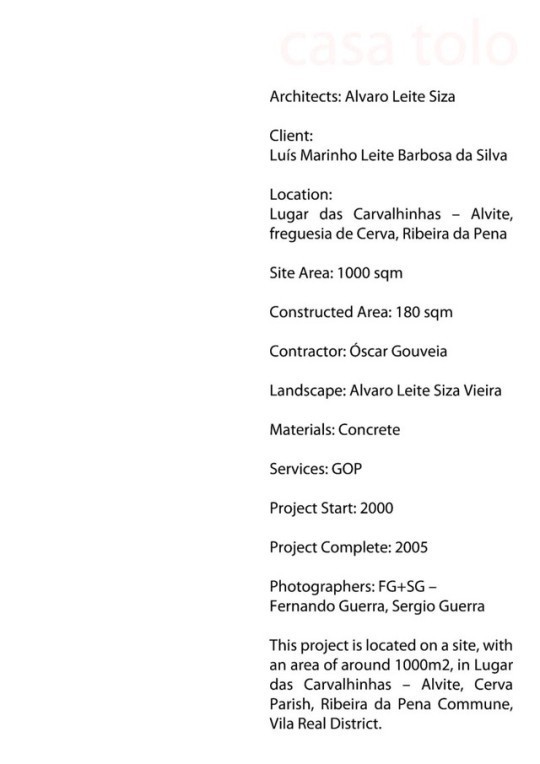 Casa Tolo Project Info.
Casa Tolo Project Info.
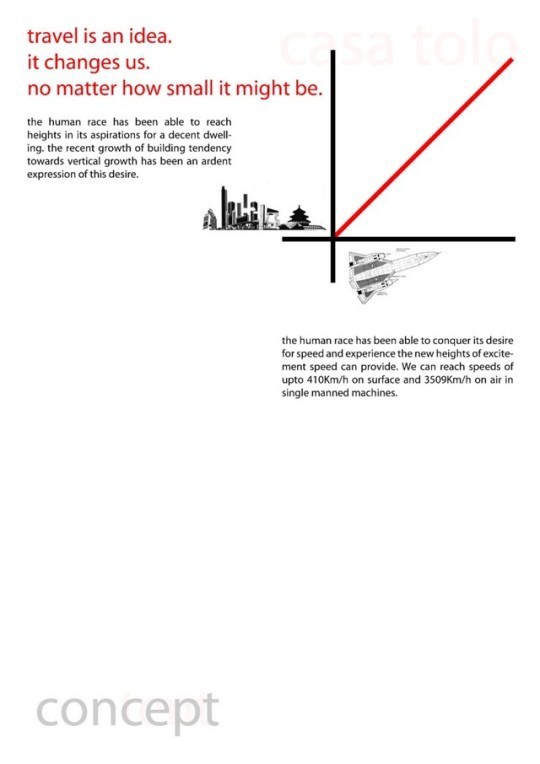 Casa Tolo Concept.
Casa Tolo Concept.
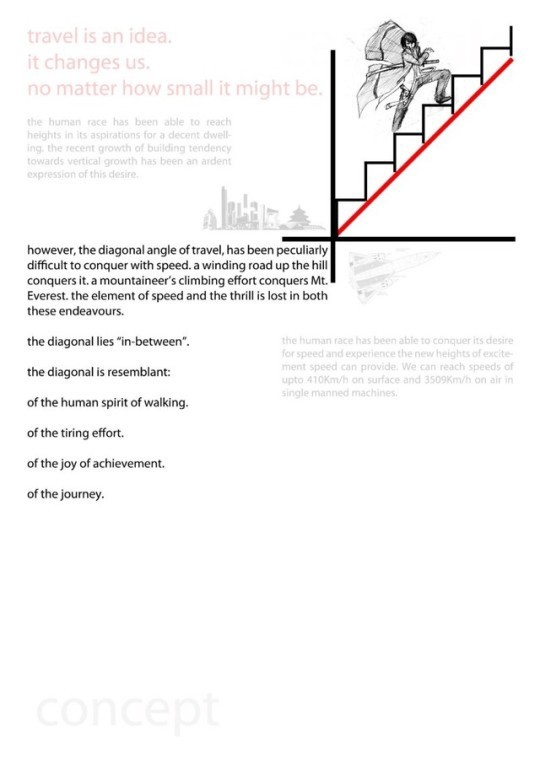 Casa Tolo Concept.
Casa Tolo Concept.
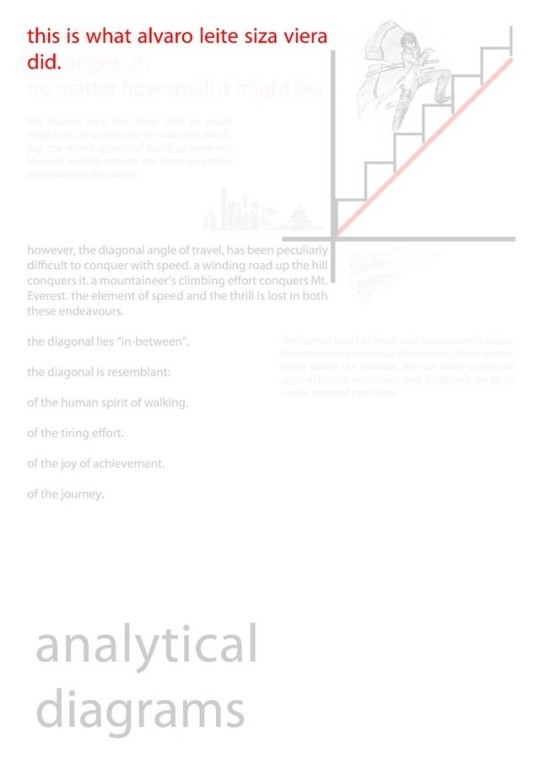 Casa Tolo Analytical Diagrams.
Casa Tolo Analytical Diagrams.
 Casa Tolo Analytical Diagrams.
Casa Tolo Analytical Diagrams.
 Casa Tolo Analytical Diagrams.
Casa Tolo Analytical Diagrams.
 Casa Tolo Analytical Diagrams.
Casa Tolo Analytical Diagrams.
 Casa Tolo Analytical Diagrams.
Casa Tolo Analytical Diagrams.
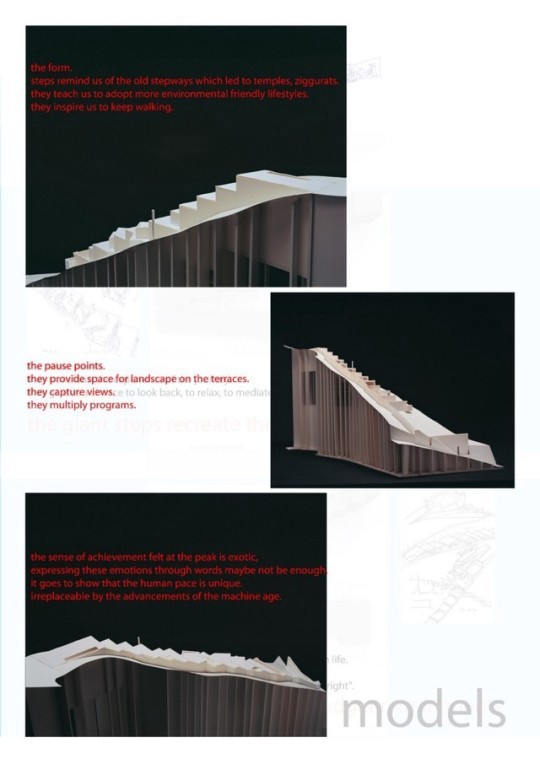 Casa Tolo Models.
Casa Tolo Models.
 Casa Tolo Models.
Casa Tolo Models.
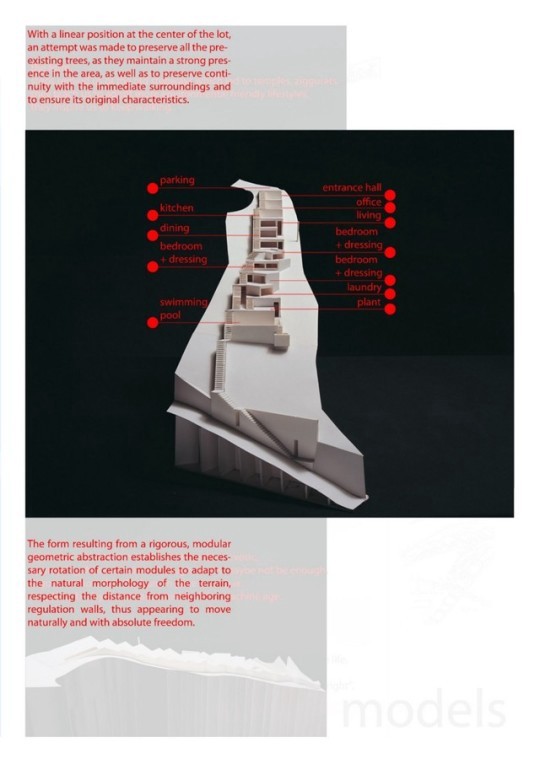 Casa Tolo Models.
Casa Tolo Models.
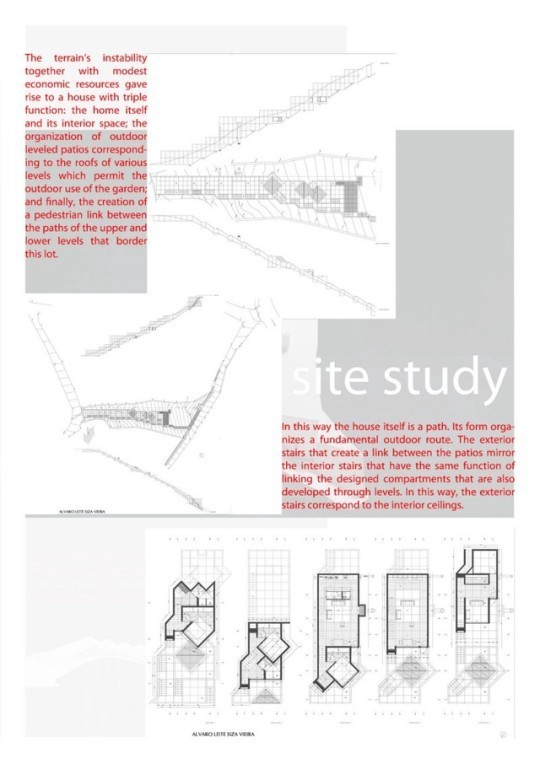 Casa Tolo Site Study.
Casa Tolo Site Study.
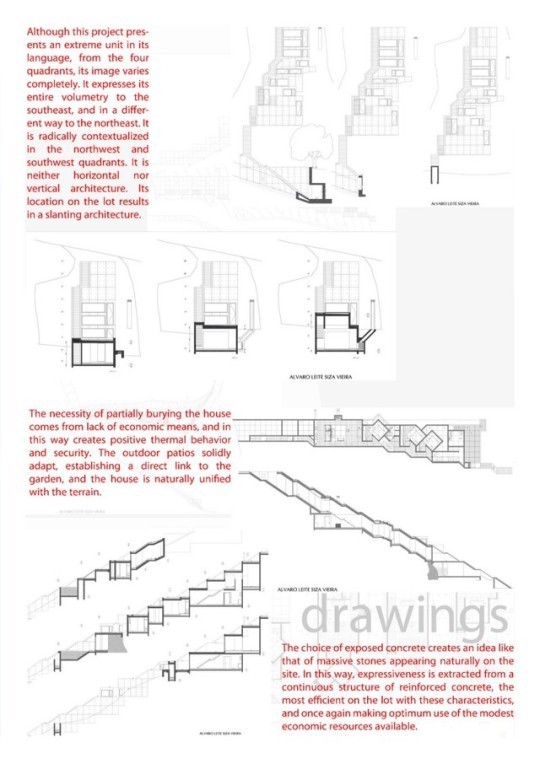 Casa Tolo Drawings.
Casa Tolo Drawings.
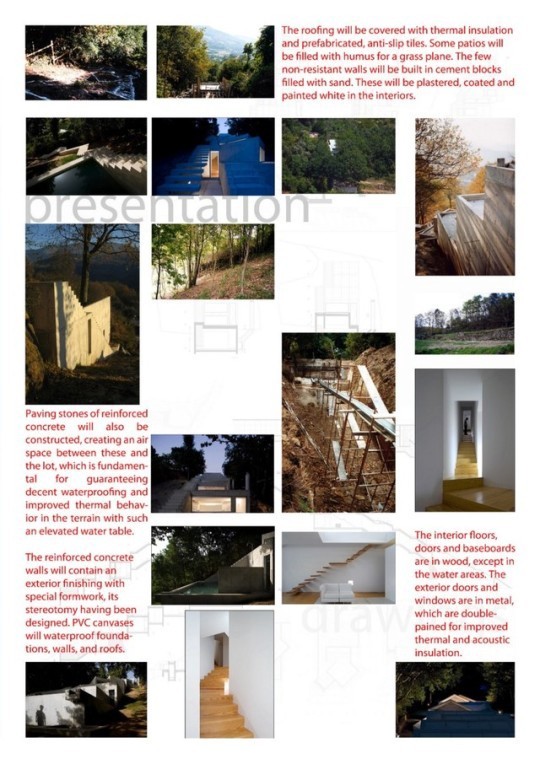 Casa Tolo Presentation.
Casa Tolo Presentation.
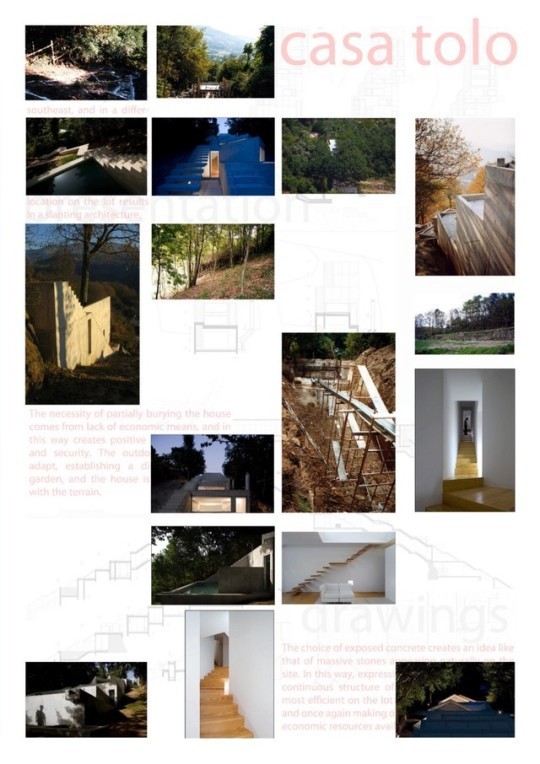 Casa Tolo Back Page.
Casa Tolo Back Page.